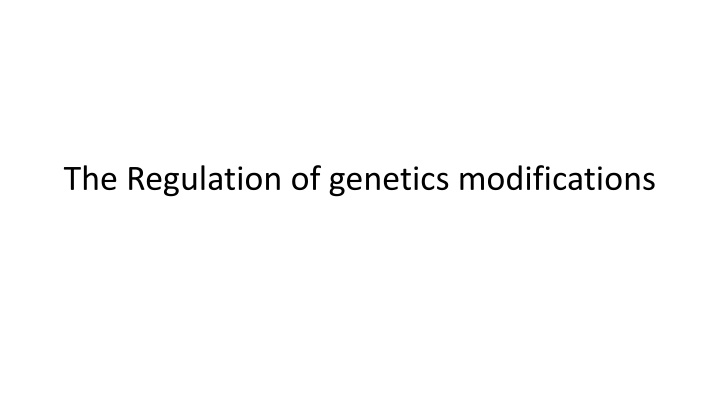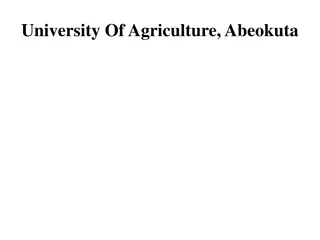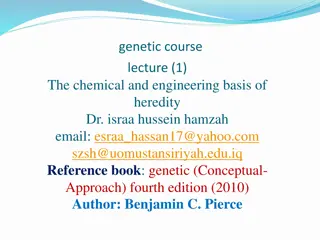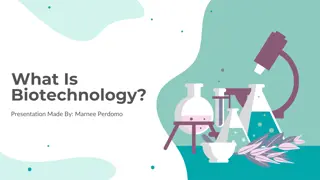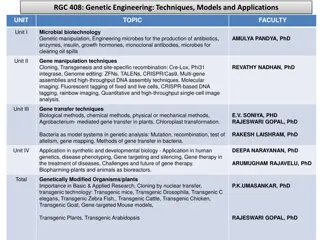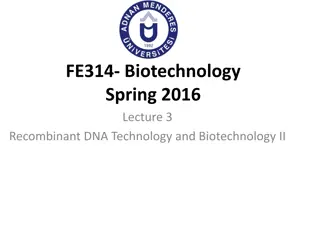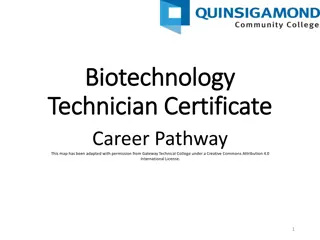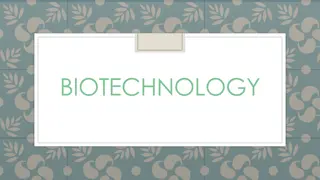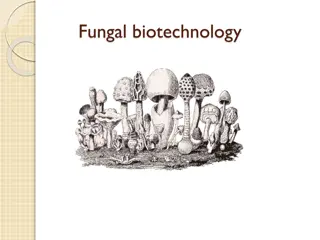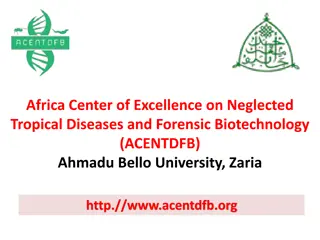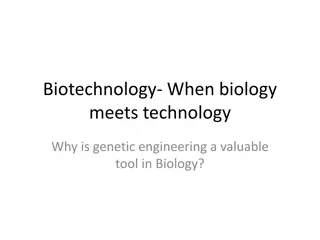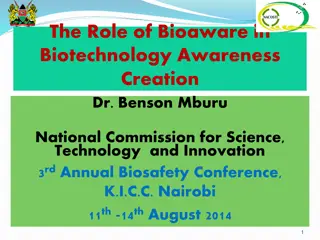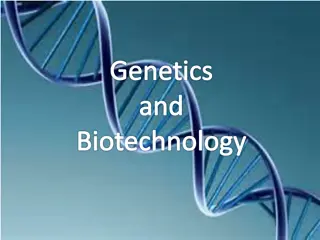The Regulation of Genetics Modifications in Biotechnology
Biotechnology plays a significant role in engineering plants and regulating food crops through genetic modifications. The use of modern biotechnology, such as genetically modified organisms (GMOs), has grown exponentially worldwide. Advantages include increased agricultural productivity and improved nutritional values, while disadvantages range from allergic reactions to concerns about antibiotic resistance. The European Union and international laws approach biotechnology cautiously, contrasting the United States' more relaxed stance.
Download Presentation

Please find below an Image/Link to download the presentation.
The content on the website is provided AS IS for your information and personal use only. It may not be sold, licensed, or shared on other websites without obtaining consent from the author.If you encounter any issues during the download, it is possible that the publisher has removed the file from their server.
You are allowed to download the files provided on this website for personal or commercial use, subject to the condition that they are used lawfully. All files are the property of their respective owners.
The content on the website is provided AS IS for your information and personal use only. It may not be sold, licensed, or shared on other websites without obtaining consent from the author.
E N D
Presentation Transcript
Biotechnology is big business. As such, the use of biotechnology to engineer plant and the regulation of the resulting food crops, involves economic and trade issues, as well as science and health issues. Through modern biotechnology, selected individual genes are transferred from one organism into another, sometimes between nonrelated species, using recombinant DNA (rDNA) methods. Genetically modified organism (GMO), that s created a GM plants then produce GM foods. The first GM crop the GM tomato was sold in the market in 1994. Genes derived from a bacterium in the soil, Bacillus thuringiensis (Bt), have been inserted into crops to promote resistance to certain insects, producing Bt-corn, Bt-cotton, Bt-potato, Bt-rice, and Bt-tomato.
Worldwide, GMOs have grown exponentially; the total area of biotech crops increased thirty times between 1996 and 2001. As GMOs become an increasingly dominant part of the U.S. food supply, it is important to explore the basis for these concerns and the need in the regulatory responses to this technology.
World Health Organisation (WHO) Advantages Increased agricultural productivity and improved nutritional values. Reducing hunger. Conserving the environment by reducing pesticide and herbicide use.
Disadvantages Provoke allergic reaction. The antibiotic-resistant marker genes that typically are inserted with GM material to facilitate identification of GM cells were transferred, a person could become resistant to antibiotic medicines. Consequently Potential risks for the environment. Certain ingredients in GM foods may cause cancer.
EUROPEAN UNION AND INTERNATIONAL LAW Europeans and the international community take a more cautious approach than the United States. Until recently, consumers in the United States have appeared to be relatively trusting and uninformed of a technology that in Europe which has triggered extensive public debate, due lack of transparency. U.S regulators don t view biotechnology as posing special risks in and of itself, the regulatory treatment of biotech products has been limited to fitting them within existing laws. While, European regulators dealt with biotechnology as a novel process requiring novel regulatory provisions, leading to launched a complex series of European and international initiatives that considering a wide range of known and unknown risks to human health and environment.
Cartagena Protocol (Biosafety Protocol) focuses on the potential adverse effects of living modified organisms (LMOs) on the environment and risk on human health. Cartagena Protocol: Regulates the trade and transfer of LMO cross the borders. It provides risk scientific detection methods and assessment techniques, and allows governments to prohibit the import of GM foods because of safety concerns. Lastly, the Cartagena Protocol establishes a Biosafety Clearing-House to facilitate the exchange of scientific, technical, environmental, and legal information, and experience with, living modified organisms and to assist countries in the implementation of the protocol.
Regulation of GMO in U.S Three federal agencies within the U.S. government work together to regulate most GMO to ensure that GMOs are safe for human, plant, and animal health. 1- Food and Drug Administration. 2- Environmental Protection Agency. 3- Department of Agriculture.
Food and Drug Administration (FDA) FDA regulates most human and animal food, including GMO foods. FDA makes sure that foods that are GMOs or have GMO ingredients meet the same strict safety standards as all other foods.
Environmental Protection Agency (EPA) EPA is responsible for protecting human health and the environment, which includes regulating pesticides. EPA regulates the safety of the substances that protect GMO plants, referred to as Plant-incorporated protectants (PIPs) ,that are in some GMO plants to make them resistant to insects and disease.
Department of Agriculture The USDA animal and Plant Health Inspection Service (APHIS) protects agriculture in the United States against pests and disease. APHIS sets regulations to make sure GMO plants are not harmful to other plants.
